Biodiverse Gardens Improve Pollination, Harvests, and Pest Control
A biodiverse garden has a wide variety of plants, food crops, birds, insects and other living species. Such diversity enhances our sensory pleasure, health and wellbeing. Bird song, colorful perfumed flowers, exciting flavors and plant textures are just a few of the benefits of a biologically rich garden.
Why is Biodiversity Important?
Many gardeners struggle with low yields, poor soil or pollination and pest insect damage. However, increasing the biodiversity of plants and wildlife has been found to help these issues.
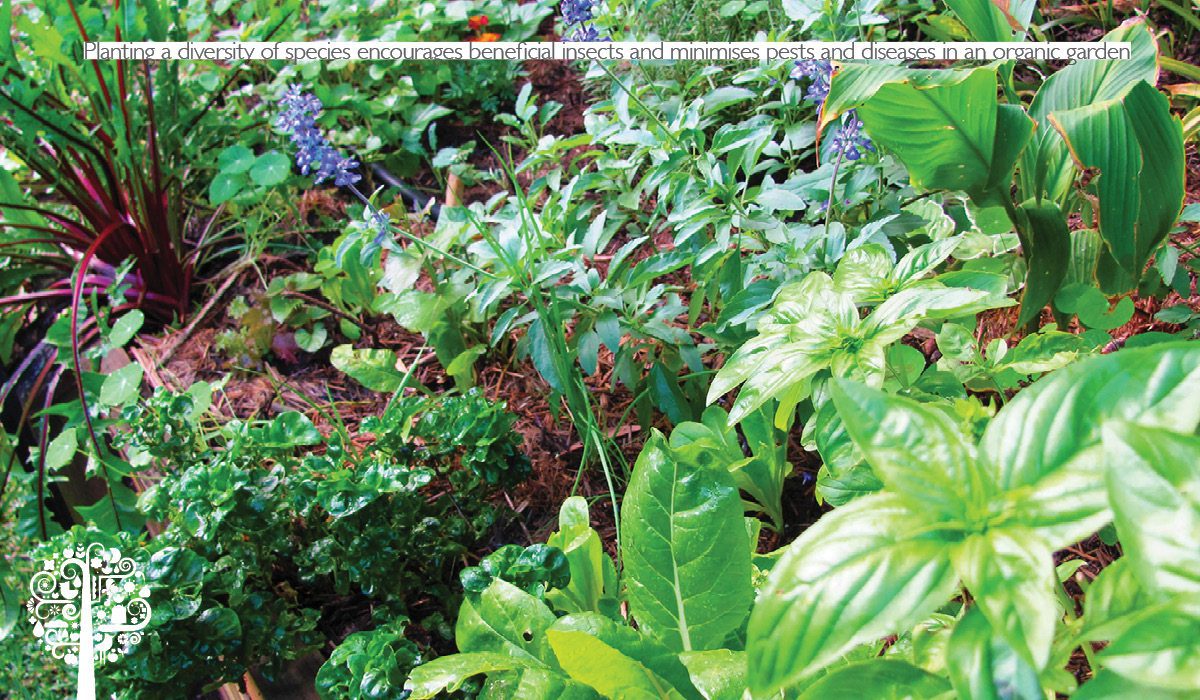
The plants and living creatures inhabiting our gardens are interconnected in the web of life. The absence or loss of one species may not make a huge difference. However, these common problems often occur where species numbers (abundance) and varieties (species-richness) are minimal. Species biodiversity helps improve crop productivity, resilience and stability in our garden ecosystems.
Effecting Change
I moved house a year ago from a biologically-rich garden to a compact urban block. I surveyed the insects in my new backyard to identify which species were present. I was shocked to count just four native bees of the same species and very few other insects or invertebrates. Not only was the soil devoid of worms, but there were no buzz pollinators to fertilize my Solanaceae crops like blueberries, eggplant and tomatoes. No honeybees were pollinating the citrus, and I observed no beneficial predatory insects like ladybirds, hoverflies or dragonflies. My food garden was going to struggle to achieve productive harvests.
I had to work fast to change the scarcity of species in this yard into a biodiverse ecosystem that could support a highly productive food garden. With careful plant choices and positioning, I made a massive positive impact on biodiversity in a short space of time.
“The fearless bolstering of biodiversity isn’t a mere act of conservationism, but rather articulates an embracement of the wellbeing of all living things in every scale of habitation.” – Amir Schlezinger
Benefits of a Biodiverse Garden
With the introduction of each new plant, I noticed a corresponding increase in biodiversity in a matter of days. Creating a biologically rich garden is a profoundly rewarding experience for our well-being and the living creatures who provide ecosystem services for us. These include pollinators, decomposers, and pest controllers.
Pollination
The vast majority of homegrown food crops rely on fertilization services by insects like bees, butterflies, ants, moths, wasps and hoverflies. However, many other species, including birds, bats, beetles and small mammals, also pollinate various plants.
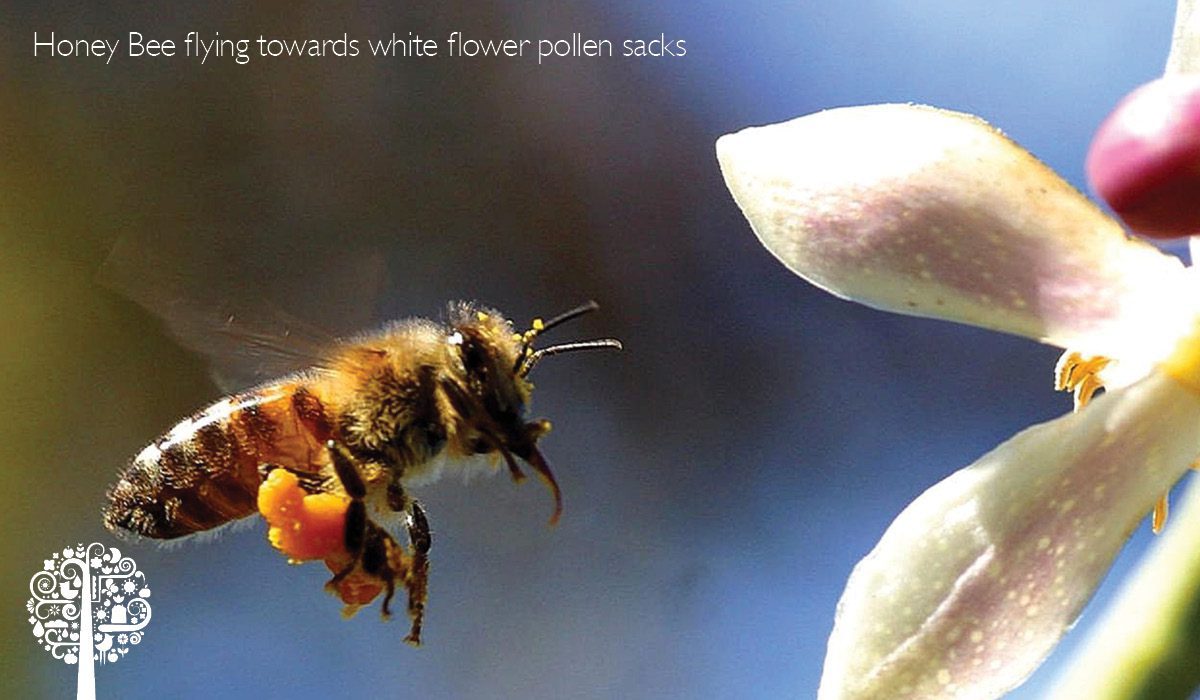
Pollinator biodiversity is vital in nature and our gardens. One study(1) found some plants have complex relationships and co-dependence with insects. Some crops like the Solanaceae family require specific insects like buzz pollinators, while generalist feeders pollinate others.
One of the missing puzzle pieces I had to overcome was the lack of flowering species as a food source to attract pollinating insects. By introducing flowering perennials, many in portable pots, I could locate them where pollinators would ‘crop hop’ and fertilize my edibles. For home food gardeners, protecting, restoring and creating native habitats to support pollinator diversity and abundance is essential for not only their lives but ours.
Decomposition
Arthropods like beetle larvae and ants, flies and earthworms play an instrumental role in soil health. These decomposers convert decaying plant matter into fine particles that soil microbe communities further break down. This nutrient cycling results in soil fertility via bioavailable minerals and trace elements, improved soil texture and structure, aeration and higher water-holding capacity. Soil microbes, including fungi and bacteria, also play an essential role in disease suppression; small but mighty ecosystem services vital for healthy new plant growth!
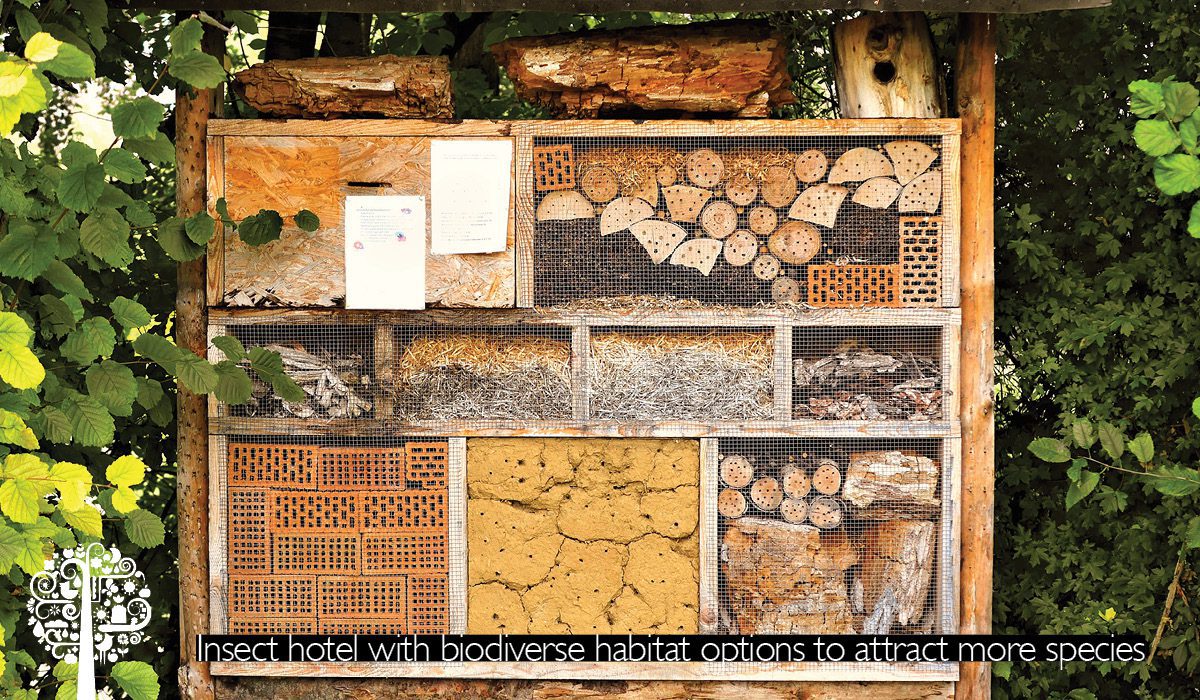
Another improvement to my backyard diversity resulted from recycling food waste into the in-situ worm farms I installed. This significantly increased the numbers and biodiversity of worms and arthropods, microbes and black soldier flies, who now provide valuable decomposition services.
Pest Management
Insect Predators
Biocontrol pest control is an incredibly effective alternative strategy to using chemicals in our gardens. Rather than adopting an ‘us vs them’ approach to dominate and destroy insect pests, integrated pest management relies on the vast number of beneficial predatory insects that feed on other insects. They help maintain a natural balance by regulating pest populations. We think of aphids as ‘pests’, but they’re simply dinner to a predatory species like ladybirds!
Around 10% of all insects are parasitoids. These insects spend part of their larval stage either inside or on another host organism, feeding on the host as it develops and eventually causing its death. Predatory wasps, for example, lay eggs inside host caterpillars. Their larva eats the caterpillar from the inside, hatching as it dies and effectively ending the lifecycle of the pest species.
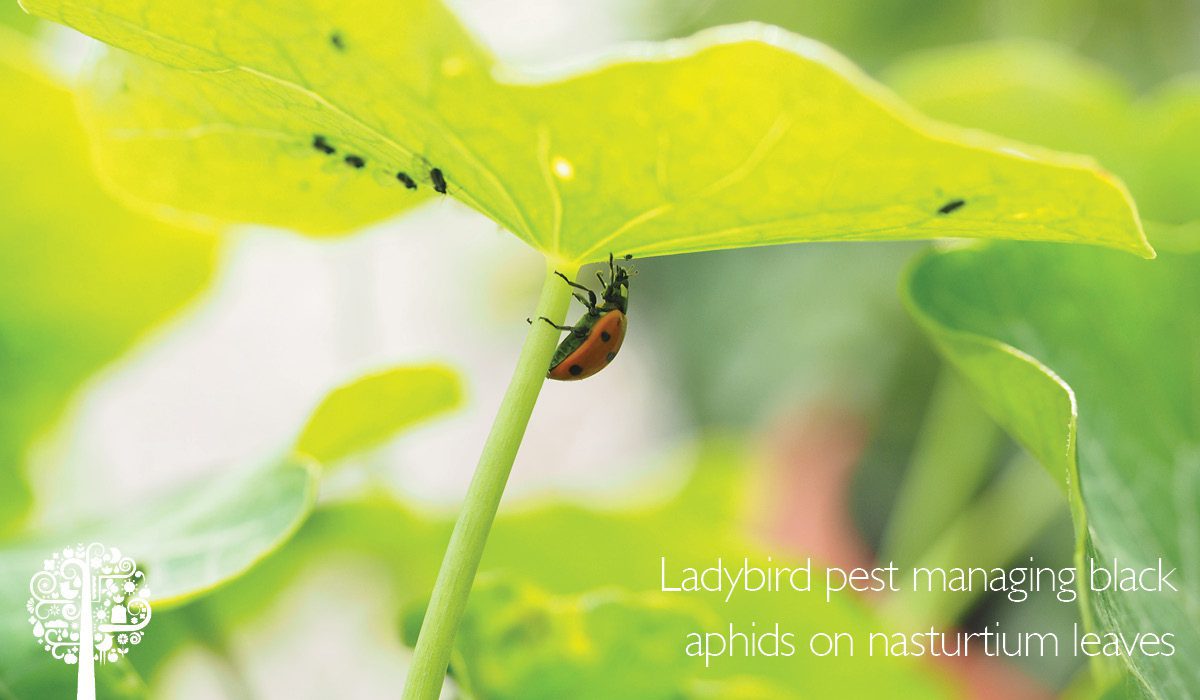
Predatory insects include ladybirds, dragonflies, lacewings, wasps, ant lions, many true bugs, beetles, ants and flies. Research studies confirm that low levels of plant biodiversity equate to a significant reduction in natural pest enemy populations. However, in a healthy ecosystem with species-rich insect communities, the beneficial natural pest enemies far outweigh the harmful species.
Insect-eating Birds
Don’t underestimate the value of birds as pest patrollers, either. They are opportunistic feeders, quick to identify new flowers or insects in the garden. If their needs are met, they manifest! For example, our flowering privacy hedge also acts as a nesting habitat, shelter for small birds, roosting spots and forage for insect-eaters and nectar-feeding species. Birds come and go all day.
In the Spring, I heard a family of mynas making a tremendous racket on the lawn. With seven babies in tow, the family was chattering excitedly as they meticulously worked the grass over. They were devouring lawn grubs! Three days later, they finished the feast and off they went, saving our lawn. Magpies came with their new kids on the block, pest managing the newly arrived grasshoppers. Again, ecosystem balance was restored. I didn’t have to interfere, use chemicals or control pests; biodiversity in action.
Plant It and They Will Come
As I added more flowering species to my garden, the insect diversity grew daily. Honeybees started appearing along with many other native bees, including buzz pollinators like Blue-banded bees. I knew then I was going to get a good harvest.
The bee bath I installed in the rear garden had regular visitors. I began to notice predatory insects like dragonflies, hoverflies, praying mantids and ladybird species arriving in many colors, each with their favorite hosts.
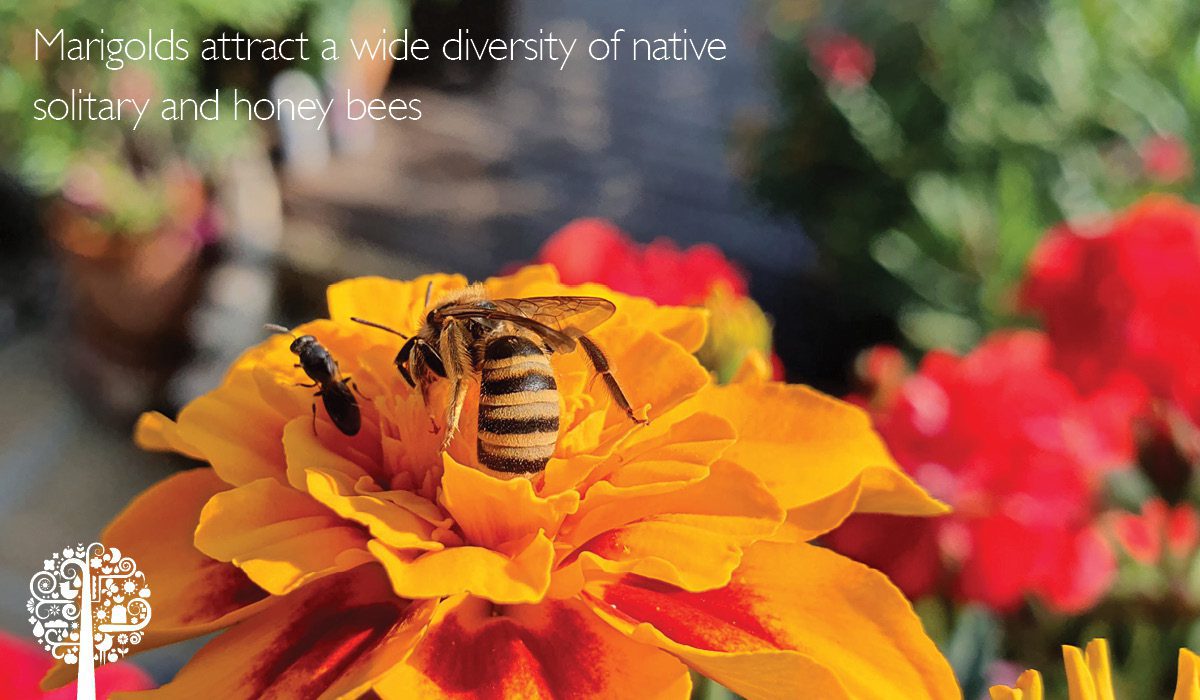
I am a firm believer that if you plant it, they WILL come and faster than you think! Now, a year later, my garden is a fly-thru restaurant for many bird species and the air abuzz with insects going about their business. To do a survey count now would be a tough call – the species richness and abundance has changed dramatically.
Tips for Increasing Biodiversity
There are simple things we can do to enhance the wildlife and plant species diversity in our gardens.
• Provide food, shelter and water. These are the basic needs of all creatures. A birdbath, shallow bee bath or pond provides clean water for drinking and bathing for birds, insects, frogs and other animals.
• Grow heirloom varieties of fruits, vegetables and herbs. Preserve biodiversity by selecting and saving heritage seeds. Rather than planting rows of one type of lettuce, mix it up and include lots of different salad greens like rocket, sorrel, baby spinach, nasturtiums and mustard. These provide edible flowers of varying sizes, seeds and attract a diversity of insect species.
• Go wild! Create native habitat. A small corner of your garden dedicated to indigenous native flora will attract new species. Even a little messy spot providing shelter like a small log, pebbles, native grasses or flowering species will encourage more insects and creatures to move in.
• Select diverse annual and perennial plants. Plant-species-rich gardens have various plants in different shapes, sizes, scents and colors to magnetize wildlife. Avoid mono cropping, even on a small scale. Interplanting mixed-species imitate natural ecosystems. Grow edibles among ornamentals.
• Plant fragrant, colorful flowers. Nectariferous pollen-rich blooms, many with seeds, are a food source for birds and insects, including pollinators like bees and butterflies.
• Make compost and mulch. Decomposers like worms and soil microorganisms convert organic matter into nutrient-rich healthy soil, increasing productivity and harvests.
With a few simple actions, we can each play a role in expanding biodiversity one garden at a time.




